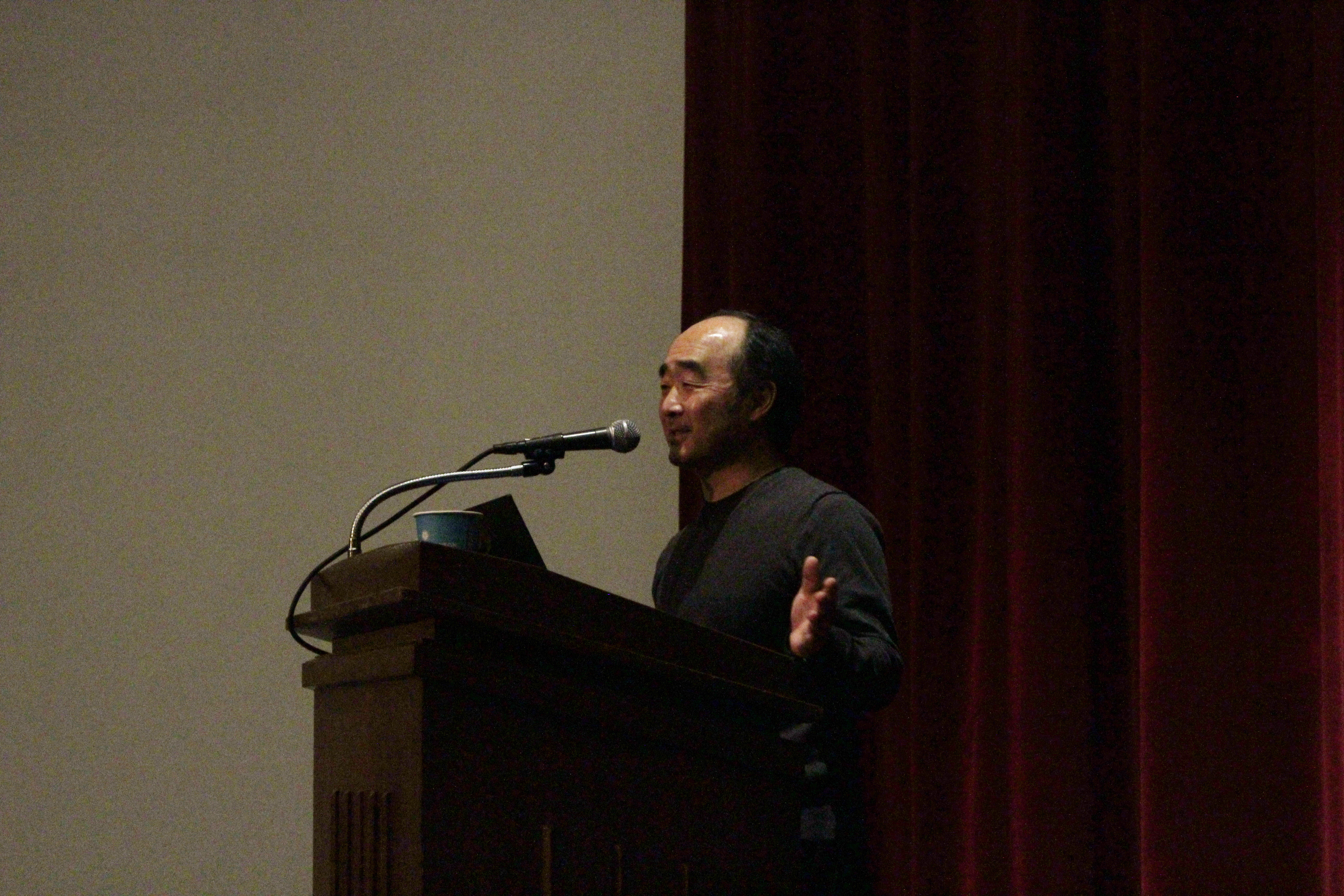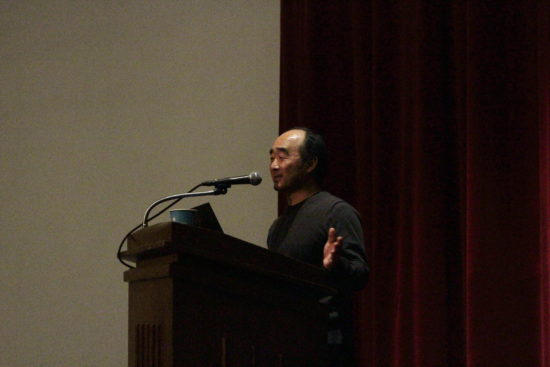

Feature by Judah Breitbach
“Nidoto nai yoni; let it never happen again.”
Clarence Moriwaki, President of the Bainbridge Island Japanese American Community, and founder of the Bainbridge Island Japanese American Exclusion Memorial, gave a moving talk last thursday in the J-Building’s little theater. Moriwaki has also spent time as a journalist, public spokesman for Bill Clinton and others, as well as earning his Eagle Scout award at 12 years old, among numerous other accolades.
Moriwaki split the lecture into four points of interest: history, honor, healing, and hope. The history of the island’s japanese culture, as well as the historical importance of Executive Order 9066 and Exclusion Notice one had particular emphasis in the talk. From there, there was a segue from the gravity of past actions to the importance of hope in the form of the Exclusion Memorial on Bainbridge Island, now a national monument.
276 Were Taken
The Japanese American immigrants on the island worked predominantly in the Port Blakely ship yard, as well as in the Strawberry fields on the island. Moriwaki indicates that the community relationships were strong prior to Exclusion Notice One and the deportation of Japanese Americans to internment camps.
The notice was posted Mar. 24, 1942, only three months after the attack on Pearl Harbor, and one month after Executive Order 9066 (nearly 10,000 in 1942, while former President Obama is being Chastised for signing a few of his own says Moriwaki) was signed by Franklin D. Roosevelt.
On March 30, six days later, the U.S. Military escorted 276 American citizens and Bainbridge Island residents ferries that took them to busses and trains that took them to the confinements of an internment camp.
For three years the halls of Bainbridge Island’s schools held fewer children, and it’s strawberry fields had fewer workers. The graduating class of ‘42 reserved 13 empty seats for the students in internment camps who would have graduated that year.
Walt and Milly Woodward, then publishers and editors of the Bainbridge Island Review, maintained Japanese American inclusion in the community by featuring a column from a camp correspondent, Paul Ohtaki, who was held in a Japanese internment camp. They balanced this with content from supporters of Exclusion Notice One.
The Fear of Precedent
Moriwaki put an emphasis on the idea that another exclusion of a demographic based on race, religion, sex or other reasons never happen again. He showed slides of “Open Season on Japanese” hunting licenses that bore a striking similarity to more contemporary “Open Season on Muslims” poster.
The precedent that Executive Order 9066 set, even though it was rescinded by President Ford in 1976, and found to be unconstitutional in 1982 after two years investigating the order, is still something that Moriwaki, and arguably others, find unsettling considering the current political and sociological atmosphere.

There is more to this story: 1. Executive Order 9066 applied to any and all persons. 2. German Americans and Italian Americans were also interned, in more than 50 camps and detention centers. https://uploads.disquscdn.com/images/a33897c6b38ec5af53bc564090962ba292188bcd7a5ef720067f769299b28fb7.jpg https://uploads.disquscdn.com/images/52126c9c4d2a993e87dc854b04e32d80c29fe3442a461b0adac112f7ccba41eb.jpg
The first photo is that of German Americans and Japanese Americans in the Crystal City Texas internment camp; the second photo is a photo of 5th grade students also in the Crystal City internment camp.